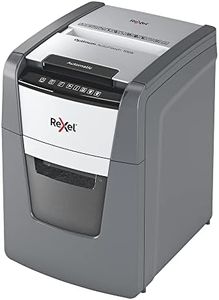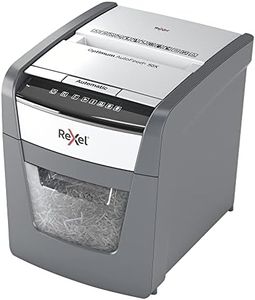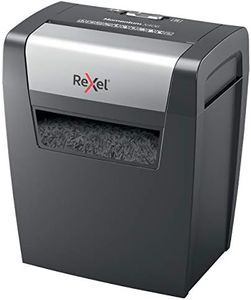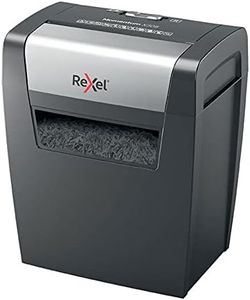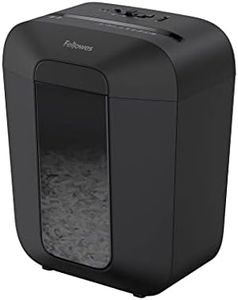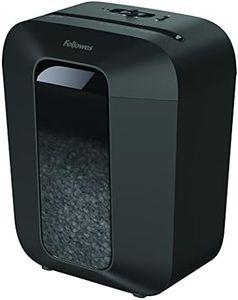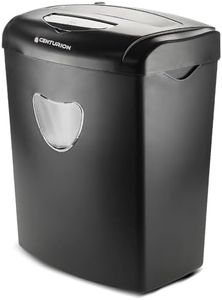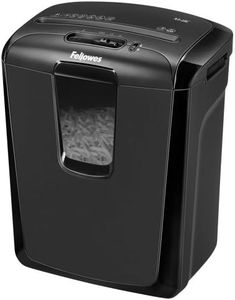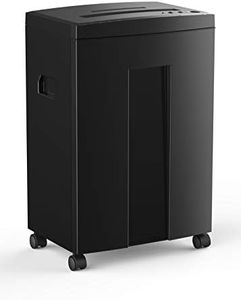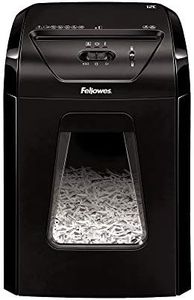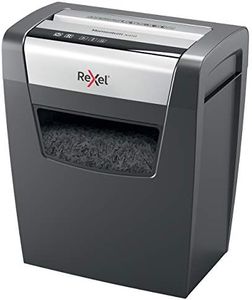We Use CookiesWe use cookies to enhance the security, performance,
functionality and for analytical and promotional activities. By continuing to browse this site you
are agreeing to our privacy policy
10 Best Shredders
From leading brands and best sellers available on the web.Buying Guide for the Best Shredders
When choosing a shredder, the key is to find a model that matches both your security needs and how often you’ll use it. Shredders are essential for safely disposing of sensitive documents, whether at home or in the office. Understanding the main features and how they relate to your workflow will help ensure you pick one that’s efficient, secure, and safe to use. Here’s how to approach the decision:Shred Type (Cut Style)This refers to how the shredder slices the paper: strip-cut, cross-cut, or micro-cut. Strip-cut shredders turn documents into long strips and offer basic security, which is generally suitable for less-sensitive information. Cross-cut models provide moderate security by cutting paper into small pieces, making it harder to reassemble. Micro-cut shredders slice paper into confetti-like bits, offering the highest security and are ideal if you’re disposing of very sensitive information. For everyday junk mail or non-confidential documents, strip or cross-cut may be enough, while handling financial or personal details calls for a cross-cut or micro-cut model.
Sheet CapacitySheet capacity is the number of paper sheets a shredder can handle at one time. Light-duty shredders may only handle 5 to 8 sheets, which is fine for occasional home use. Medium-duty options can handle 10 to 15 sheets, balancing home and small office needs. Heavy-duty shredders can process upwards of 20 sheets at once and are better suited for frequent usage or larger offices. Think about how many documents you usually want to shred at once; for occasional purges, higher capacity saves time, while low volume needs can stick with a smaller capacity.
Run Time and Cool DownRun time measures how long the shredder can continuously operate before needing to cool down. Light-use shredders may only run for a few minutes, after which they must cool down for 30 minutes or more. More robust models can operate for 10 minutes or longer, or even continuously in some cases. If you shred often or in batches, you’ll want a longer run time to avoid interruptions; for infrequent use, shorter run time is sufficient.
Bin CapacityBin capacity is simply how much shredded paper the waste container can hold before it needs emptying. Small bins may fill quickly and are best for light, casual shredding. Medium and larger bins require less frequent emptying and are more convenient for higher volumes. If you don’t want to deal with emptying often, or handle lots of documents, look for a larger bin.
Safety FeaturesSafety features help protect hands and fingers from the shredder blades. Some shredders have sensors that stop the machine if hands get too close, or locking mechanisms that prevent accidental operation. For homes with children or pets, or busy office settings, enhanced safety features provide added peace of mind.
Shreddable MaterialsWhile all shredders can handle plain paper, not all can destroy credit cards, staples, paper clips, or CDs. Some are specialized for multiple materials. If you plan to shred more than just paper—like expired cards or disks—make sure the shredder is rated for those items to prevent jams or damage.
